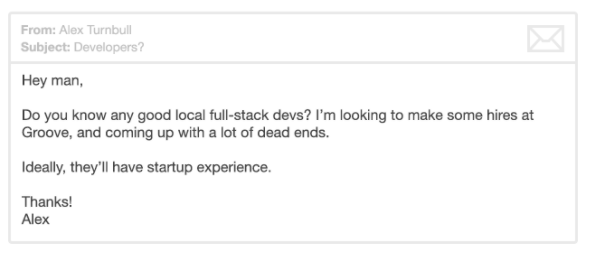— June 26, 2017

Life-Of-Pix / Pixabay
Like zip up hoodies, decked out office spaces, and beer on tap, remote work has been made hip by startup companies everywhere.
Last year, 43% of all Americans reported that they spent at least some time working remotely. And the number will only grow as young professionals seek out remote opportunities.
Most millennials – 85% – say that they want positions that allow them to work from home every day of the week.
There are whole job boards, like We Work Remotely and Remote.co, dedicated to helping candidates find remote work opportunities.
But many companies are still on the fence.
This year, we’ve seen some big players pull back on remote work or even actively double down on physical office spaces. IBM, once a champion of remote work, asked 2,600 of its marketing employees around the globe to transition back to working in the office. Apple is wrapping up construction of its new five billion dollar headquarters that spans 175-acres. Yahoo and Reddit already banned remote work a few years back.
So what is it? Should we have our teams work whenever, wherever? Or are we destined to be confined to the desk?
Why Remote Might Be in Your Company’s Future
1) Unlimited Access to Talent
When Groove’s CEO, Alex Turnbull first started hiring for engineers, he had a lot of trouble finding talent in the Newport area.

There just weren’t any candidates that had the right mix of skills, experience, and culture-fit. But once he widened the search to the rest of the country, Alex made two hires within two weeks.
Remote recruiting opens up your talent pool. You can source from a broader range of candidates across the country and perhaps even the world, making for more diversity of culture and experience.
2) Workaround for Rising Real Estate Costs
A remote team also means less overhead. With rising commercial real estate costs in most major cities, especially in New York and San Francisco, this means you can rack up a lot of savings and reallocate it towards talent and research and development.
Health insurance company Aetna has been using remote work for the past 20 years. To date, more than 31% of employees telework.
Over the past few years, the company has seen real estate savings between 15% to 25%. Because employees are commuting less, Aetna has also seen a significant reduction in the company’s carbon footprint. Teleworkers drive 65 million fewer miles per year, reducing carbon dioxide emissions by over 23,000 metric tons each year.
3) Building A Team That Sticks Around
It’s been proven that remote employees are happier and healthier.
Surveys show that 40% of remote workers sleep more, and almost two-thirds say they exercise more. According to the American Management Association, companies that offer telework programs see a 63% reduction in unscheduled absences.
Giving employees the freedom to build their own schedule allows them to work when and where they’re most productive. Whether that’s on the beach, at a coffee shop, or late in the evening back at home.
Social monitoring tool Buffer is a fully remote team. They don’t have strict working hours, but they do measure performance by output and results. Their team has the flexibility to fly off to Bali or Gran Canaria for a week to work remotely – and they’ve done so before.
Over the past five years, the team has more than doubled, from 30 employees to 80+ employees across 6 continents and 50+ cities.
When You Might Want to Think Twice About Going Remote
1) Your Team Isn’t Comfortable Working in A Non-Traditional Environment
The freedom of remote work comes with responsibility. Employees that perform best in remote work environments are those who are confident in knowing when to take breaks and when to focus on finishing up tasks.
A few years back, then Yahoo CEO Melissa Mayer famously rolled out a ban on remote work at the company. PC Mag reported that this decision came after Mayer reviewed the company’s VPN logs and found that a significant number of remote employees weren’t logging into Yahoo’s VPN. Which means they likely weren’t working.
“Though there are an abundance of remote work opportunities for those in the IT industry, candidates must be honest about their own ability to handle the heightened responsibilities and expectations that accompany remote work,” says Anthony Curlo, CEO of IT at recruiting firm DaVinciTek.
But employees can learn to adapt to remote work if they’re interested. Groove CEO Alex Turnbull says “Remote working is a skill like any other, and sometimes an employee who isn’t at their best simply hasn’t focused on working on that skill yet.”
Infographic design app PikoChart writes that remote workers should strive to be expert communicators, comfortable at taking ownership from start to finish, and know when to take breaks.
2) Your Team Requires Face-to-Face Communication
There are just some jobs that require a lot of facetime. Project managers and product designers, for example, might be more productive in an office setting where they can run over to someone’s desk to review timelines and wireframes.
A lot of software solutions have cropped up over the past few years hoping fill this gap, but there still is a gap. Project management tool Trello is a great resource for remote teams looking to centralize all task related items. Slack and Jell make it easier to communicate, share GIFs, and share regular status updates. Bitly helps teams transparently track and share link performance across channels and devices.
One Company’s Remote Isn’t Remotely Like Another
Remote work’s sticking power is in the numbers. Half of all millennials report that they would switch jobs if it meant having flexibility in where they work.
If you’re still skeptical, there are many ways to run a virtual team. You don’t have to sacrifice culture or structure in the process.
Buffer practices a 45-day trial period that allows new employees and hiring managers to see if remote work is the right fit for them.
Groove uses Slack as their water cooler, sharing photos of their desks, pets, and more. The CEO regularly holds one-on-ones with everyone to check-in on work goals and gets to know everyone personally.
A remote structure can lead to more productive, successful employees with the right tools, training, and feedback loop. You just have to find the right formula that works for your team.
Business & Finance Articles on Business 2 Community
(81)
Report Post








